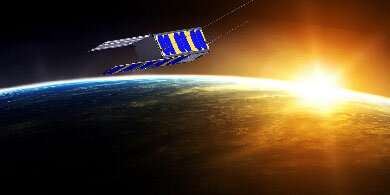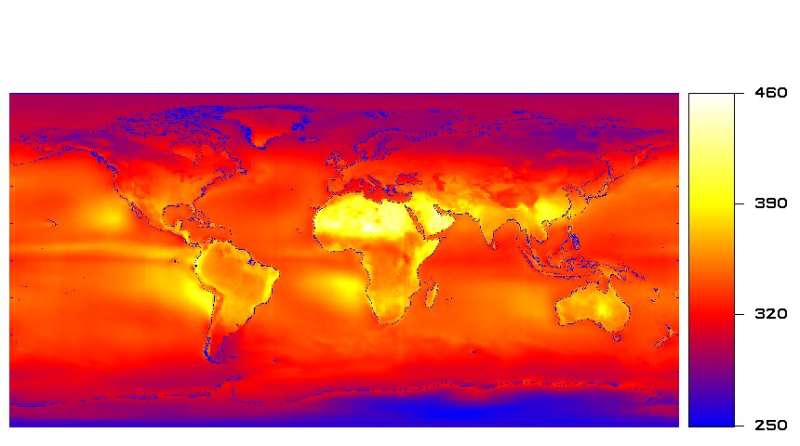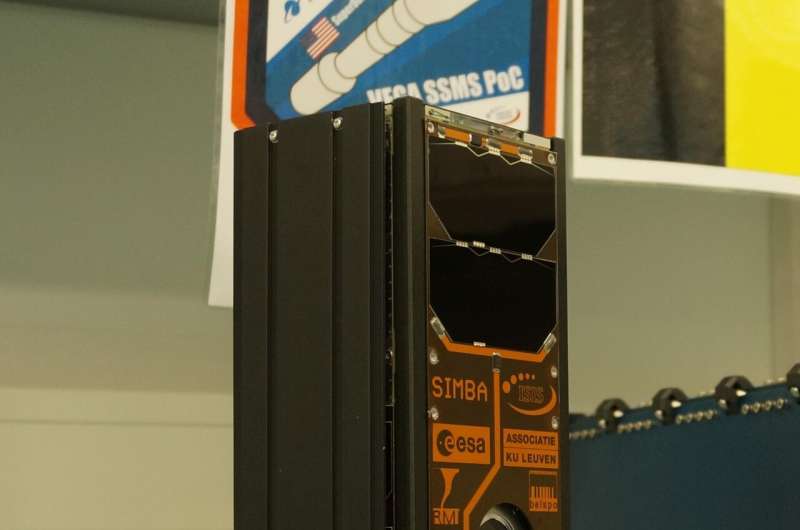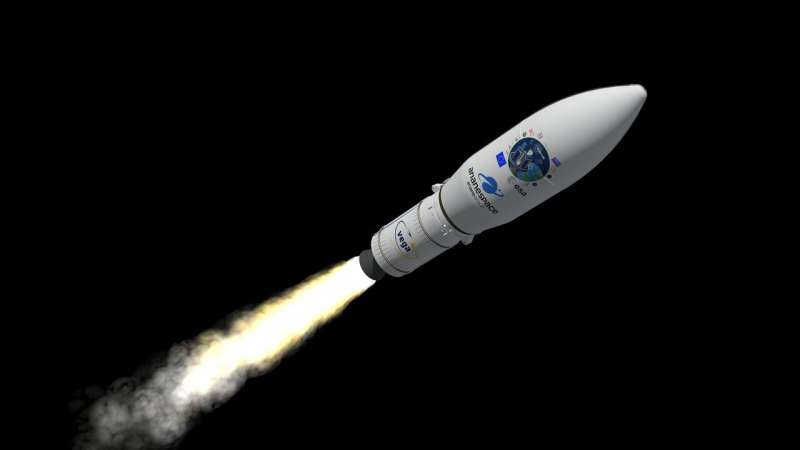Simba CubeSat to swivel from Earth to sun to help track climate change

Due to launch aboard Friday's Vega rocket, ESA's Simba CubeSat is a tiny mission with a big ambition: to measure one of the fundamental drivers of climate change in a new way. The 30-cm long nanosatellite will turn from Earth to space to the sun and back again, to calculate our planet's overall energy budget.
CubeSats are miniature satellites built up from standardised 10-cm boxes. Simba, short for 'sun-Earth Imbalance' is a '3-unit' CubeSat, developed for ESA by a consortium led by Belgium's Royal Meteorological Institute (RMI) with the University of Leuven and ISIS-Innovative Solutions in Space in the Netherlands.
"This is the kind of scientific instrument we'd otherwise place on a full-size satellite platform," explains Stijn Nevens, Simba principal investigator at RMI.
"But if we can make this work on a smaller, cheaper CubeSat, then we might be able to build and fly multiple versions of this instrument in the future, to cover the entire planet for the equivalent cost of a single traditional mission. That is important because the variable we aim to measure is crucial.
"The main origin of climate change is that an increasing amount of heat from the sun is being retained within the atmospheric system. To quantify that directly we need to measure how much solar energy Earth is receiving – we call this the total solar irradiance – then how much of this is being reflected by the Earth's surface and atmosphere, or being radiated out as longer-wavelength heat energy.

"Subtracting the second from the first, we end up with a figure for Earth's radiation budget – the amount of energy our planet holds onto rather than reflects or radiates away.
"We already have a class of instruments to measure irradiated energy, called radiometers, which convert it into electrical power for measuring purposes. Downward-looking radiometers are flying for instance on Europe's Meteosat satellites in geostationary orbit, as well as the US family of CERES instruments in lower orbits. Then there are sunward-facing radiometers on satellites like SOHO and Proba-2.
"But while their results have high relative accuracy, they require a lot of additional modelling to take account of factors such as diurnal differences and surface variations. They accordingly come with a large margin of error, while the instruments themselves possess inherent biases. For sharper climate change modelling we need to do better."
Caring for our planet

The idea with Simba is to achieve higher absolute accuracy by employing the same instrument for the very first time to measure irradiance from both the sun and Earth. The CubeSat will turn from our planet to deep space – for calibration purposes – then to our parent star.
"We're using a broadband, wild field of view instrument, meaning we're measuring the total outgoing flux from the whole Earth," adds Dr. Nevens. "Simba is based on a cavity radiometer, which is basically an internal space on the other side of a very small hole, totally painted black. We are measuring how that cavity warms up.
"Imagine a house with central heating that you want to keep warm. On a summer day you don't have to do any heating, but on a winter's day you'll lose a lot of heat and need to actively warm it. So we'll be measuring how much extra energy we need to put in to maintain a fixed temperature.
"To get our baseline we'll begin the mission by looking down at Earth for a long time, to see what temperature it stabilises at. Then we'll swivel out to deep space, just a few degrees from absolute zero, to learn the maximum level of heat we need to apply to keep it there. Then we will turn to the sun in turn, measuring the amount of radiation coming in."

Simba is equipped with a specially-developed CubeSat-optimised 'attitude determination and control system' or ADCS for short, contributed by the University of Leuven. This includes an experimental star tracker camera to fix its position against the star constellations in the sky and 'reaction wheels' whose shifting rate of spin cause the nanosatellite to shift its attitude in reaction.
Dr. Nevens adds: "This ADCS will give Simba a pointing accuracy of 0.1 degrees, which also enhances the overall accuracy of our data. We will achieve traceability, being able to know precisely where and at what we are looking at any one time."
Simba has been supported by the Belgian Science Policy Office through the 'Fly' element of ESA's General Support Technology Programme, readying promising technologies for space. It will be launched along with dozens of other CubeSats and small satellites aboard the inaugural flight of ESA's Vega Small Spacecraft Mission Service this Friday early morning.
Follow the launch on ESA Web TV from 03:15 CEST, with liftoff due at 03:51 CEST (01:51 UTC, 10:51 on Thursday night French Guiana time).
Provided by European Space Agency





















